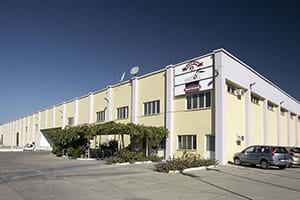 The foundation for the MAROLİ GIDA SAN. VE DIŞ TİC. A.Ş. was laid in 1982 in Germany. The steadily increasing demand of the Turkish population in Germany for authentic olive products, prompted the Kuru brothers to found the MARMARA Import-Export Gmbh in Dusseldorf. The first imports of olives on the order of a few canisters followed, within 10 years, the increase of the import volume to 4000 tons.
The foundation for the MAROLİ GIDA SAN. VE DIŞ TİC. A.Ş. was laid in 1982 in Germany. The steadily increasing demand of the Turkish population in Germany for authentic olive products, prompted the Kuru brothers to found the MARMARA Import-Export Gmbh in Dusseldorf. The first imports of olives on the order of a few canisters followed, within 10 years, the increase of the import volume to 4000 tons.
The achievement of this market share in Europe led to the decision to found MAROLİ Gıda San. Ve Dış Tic. A.Ş.
1995 in Aydın - for the production of MARMARA Olives.
 From the beginning, the production and export of branded goods in compact packaging units was emphasized. The processing of olives sourced from different regions of Turkey is based on state-of-the-art machinery and manufacturing equipment, in compliance with current standards of food quality and safety. Aydın OSB has a total of 25,000 m2 of production space available, including 10,000 m2 in closed production halls.
From the beginning, the production and export of branded goods in compact packaging units was emphasized. The processing of olives sourced from different regions of Turkey is based on state-of-the-art machinery and manufacturing equipment, in compliance with current standards of food quality and safety. Aydın OSB has a total of 25,000 m2 of production space available, including 10,000 m2 in closed production halls.
With the brands Marmara, Zeyno and Harika, MAROLI mainly exports their olives to Germany, USA, Canada, Australia, Romania and Norway. In 2013, the extensive product range was supplemented by the Zeytinköy brand, which has been supplying the Turkish market with high-quality olives ever since.
MANUFACTURING STEPS OF TABLE OLIVES
Table olives can basically be produced from any variety of olives: However, the best results are obtained with the use of the Gemlik variety - it is meaty and has a small core and a thin shell. Even though different methods are used for the final flavoring of olives, the steps from the harvest to this production step do not differ. We will introduce you to these steps below:
 1. Harvesting and transport: The olives are harvested as soon as the fruit assumes a purple color
1. Harvesting and transport: The olives are harvested as soon as the fruit assumes a purple color
 2.Verification and selection: By measuring the size of the fruit smaller, more suitable for oil production olives are sorted out. Furthermore, damaged, dented, diseased and too soft olive fruits are separated from the healthy and suitable ones.
2.Verification and selection: By measuring the size of the fruit smaller, more suitable for oil production olives are sorted out. Furthermore, damaged, dented, diseased and too soft olive fruits are separated from the healthy and suitable ones.
 3. Cleaning: Before going into the fermentation tanks for the olives, they are thoroughly washed to remove dust, earth or mud.
3. Cleaning: Before going into the fermentation tanks for the olives, they are thoroughly washed to remove dust, earth or mud.
 4. Brine and fermentation: The following methods are used to aromatize black olives: I - Gemlik method II - salt layers method III - Brine olives IV - air supply method V - rapid method (confi type) VI - brine cans method VII - kalamata olives (also Kalamon Olives) VIII - Pickled olives
4. Brine and fermentation: The following methods are used to aromatize black olives: I - Gemlik method II - salt layers method III - Brine olives IV - air supply method V - rapid method (confi type) VI - brine cans method VII - kalamata olives (also Kalamon Olives) VIII - Pickled olives
5. Selection, classification, packaging: Once the olives have ripened to the point where they can be consumed, selection and classification processes take place. If there are not yet black colored olives at this time, they are exposed to the air and thus trigger an oxidation which then causes a black color.